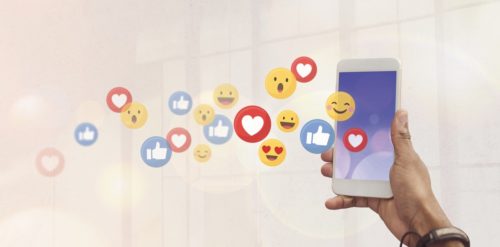Combine the vast power and reach of social media, the unlimited resources of websites and apps, and the unquenchable thirst for health information and motivation. The result is a powerful tool for researchers, health care providers and patients. But like many aspects of the internet, it can be a mixed blessing.
“Social media are an incredible product to provide support and promote good information in ways we couldn’t do before,” said Dr. Raina Merchant, director of the Penn Medicine Center for Digital Health in Philadelphia. “They can be a powerful way to understand what patients are talking about and what their concerns are.”
Her research has included analyzing Facebook posts to predict medical and psychological problems, using Yelp to evaluate drug treatment facilities, and helping clinicians use social media to better understand their patients’ experiences.
In analyzing millions of health-related tweets, however, she encountered a pervasive online dilemma: misinformation.
“One that was really common was that people were saying if you eat frozen lemons, that will cure your diabetes,” she said. “Of course, that’s ridiculous, but you can do a lot of damage by stopping your medication and just eating frozen lemons. We have to counteract that.”
That’s the challenge at the intersection of social media and public health: harnessing the vast potential for good, while guarding against the pitfalls.
“Social media can be a great place to learn health tips and get inspiration from others,” said Loren Coleman, vice president of marketing and communications of Action for Healthy Kids. The nonprofit promotes health and well-being for children and families at schools nationwide and supports using social media to further those goals. “And it can be a great way for adults, and even families together, to challenge themselves to make healthy lifestyle changes and keep yourself accountable.”
On the other hand, she said, “Cyberbullying is a huge problem. Parents need to be involved online and offline to help their kids navigate social media.”
The scope of social media is hard to overestimate. A recent Pew Research Center study calculated 81 percent of Americans use smartphones and nearly as many have desktop or laptop computers. The center also concluded 72 percent of U.S. adults use some type of social media. Among adults, 69 percent use Facebook, 37 percent use Instagram and 22 percent use Twitter.
There are countless websites and apps dispensing health information, tracking nutrition and fitness, offering encouragement and inspiration, linking people to support one another, even providing real-time medical advice.
At the professional level, Dr. Robert Harrington, an interventional cardiologist and chair of the department of medicine at Stanford University in California, said social media is becoming “a really positive addition to how I live my professional life. It’s a more efficient use of my time, allowing me to digest and consider a lot more information than I used to.”
Harrington, the current president of the American Heart Association, cites many ways social media enhances his work: more access to scientific journals, immediate interaction with colleagues far and wide, wider exposure to different perspectives.
At the same time, he’s not oblivious to the downside.
“One of the great things about social media is there’s a diversity of perspective,” Harrington said. “One of the challenges is that some of those perspectives can be dangerously wrong.”
Lately, the cardiologist has been tangling online with people unhappy with his opposition to vaping because of the health dangers.
“They don’t want to talk about data or science, they want to talk about how they feel,” he said.
But Harrington said professionals shouldn’t shy away from the debate.
“You’ve got to be willing to engage,” he said. “I encourage clinicians and scientists to be on social media. We need more truthful voices in these conversations rather than belief-oriented voices.”
Merchant agreed.
“Health care providers can’t just leave it up to the internet to determine what’s correct,” she said. “We have to be part of the discussion and we have to defend good science.”
For the general public, the challenge is on the receiving end. With more information than ever available, the task is sorting through it all and determining what is credible.
“You need to figure out which are trusted sources,” Harrington said. “That means getting different perspectives and using critical thinking.”
Coleman said the term “infobesity” captures the overload of information that can inundate people on social media and everywhere online.
“Managing all of that for ourselves and our children in a healthy way is really vital,” she said.






